Indesign’s Queensland Editor, Margie Fraser, reports on the heritage-listed Empire Theatre – the ’Art Deco trophy’ of Australia’s largest inland city.
May 22nd, 2008
With the fortunes of the nation no longer riding on the sheep’s back, many grand old rural townships have become dusty carapaces of abandonment. Others enjoy continuous prosperity and life force.
Toowoomba, south-west of Brisbane on the edge of the Darling Downs, is one of the lucky ones. As Australia’s largest inland city, it has long been a place for the local squattocracy to attend boarding school, be christened and wed, conduct business, and eventually retire.
The heritage-listed Empire Theatre is one of Toowoomba’s Art Deco trophies. First opened in 1911, then destroyed by fire in 1933, it has since been painstakingly re-built and restored.
Amenities have extended into neighbouring areas – the next door church is a secondary performance and rehearsal space, and the main building is flanked by generous foyers housing bars, a new box office, and break-out zones. The extensions, designed by HASELL architects and completed in 1997, touch the original building lightly.
When PDT Architects were commissioned to design a restaurant adjoining the theatre, their primary objective was to make the building transparent.
“We couldn’t match it with either building on the property,” says architect John Brown. “The little church is Victorian Gothic, the Empire Theatre an interpretation of Art Deco. The main thing was not to take anything away from them.”
Brown was also conscious of mediating between the differing scale of the imposing theatre and more humble church. The restaurant connects the two. Its lobby area provides direct access into the western theatre foyer and is the landing point for a new glass bridge to the old church.
The long thin building nestles into the western elevation of the theatre. The box office (a previous glass addition), restaurant and church are each placed a step further back and away from the front of the theatre, performing an adroit and respectful zig-zag across the site.
A series of concrete columns along the restaurant’s length are reminiscent of the church buttresses behind. In balmy weather, the whole pavilion can be opened to the adjacent landscaped garden. The region is notorious for cold winters and fierce westerlies, and the western-facing glass acts as both a wind break and thermal heater.
Interiors pay homage to the finishes in the neighbouring theatre while retaining a clean and contemporary aesthetic. Bull-nosed bars finished in rich Mahogany and mini-orb recall those in the theatre. Timber and floors and ceilings are grooved in a radiating pattern derived from the neighbouring Art Deco ornamentation.
The intimate but detailed space is unassuming and calming, and allows patrons to enjoy the spectacle of the landscape beyond, or to segue to the richly elaborate public zones of the old theatre and all that may take place on stage.
Architect PDT Architects
Project Architects Mac Stirling, John Brown, Colin Millwood, Nanette Saunders
Design Architects Mac Stirling, John Brown
Builder Robert Weymouth
Structural Consultant Thomas Hambley
Electrical Consultant NDY (Ian Gault)
Mechanical Consultant NDY (Peter Buckby)
Hydraulic Consultant Quantec McWilliam (Ken Bourke)
Landscape Consultant PDT Architects (David Uhlmann)
Interior Designer PDT Architects (Nanette Saunders)
Services Consultant NDY (Peter Downer)
PDT Architects
(61 7) 3232 1300
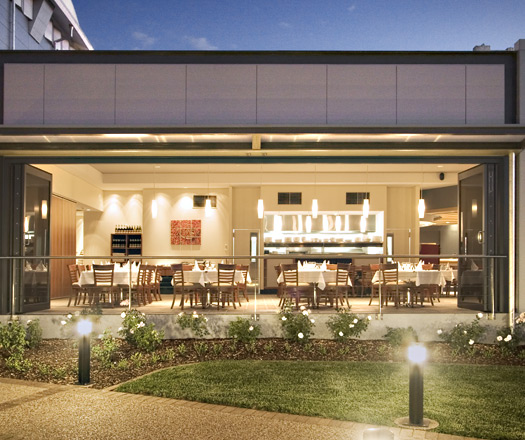

INDESIGN is on instagram
Follow @indesignlive
A searchable and comprehensive guide for specifying leading products and their suppliers
Keep up to date with the latest and greatest from our industry BFF's!

Welcomed to the Australian design scene in 2024, Kokuyo is set to redefine collaboration, bringing its unique blend of colour and function to individuals and corporations, designed to be used Any Way!
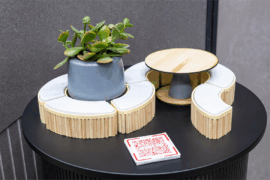
From the spark of an idea on the page to the launch of new pieces in a showroom is a journey every aspiring industrial and furnishing designer imagines making.

For Aidan Mawhinney, the secret ingredient to Living Edge’s success “comes down to people, product and place.” As the brand celebrates a significant 25-year milestone, it’s that commitment to authentic, sustainable design – and the people behind it all – that continues to anchor its legacy.

Design and Innovation Director at the Breville group, Richard Hoare has been a guiding hand in the development of electrical appliances in Australia for over 20 years.
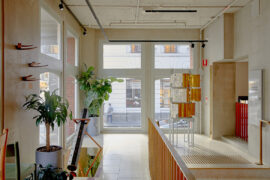
Stylecraft and NGV call for furniture and lighting designs addressing small-space living, with $20,000 prize and commercial development opportunity.
The internet never sleeps! Here's the stuff you might have missed
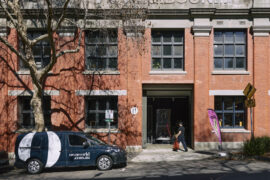
ownworld unveiled Silent Beams in its Collingwood showroom, marking the arrival of Swedish lighting brand Wästberg through a new partnership with Euroluce.
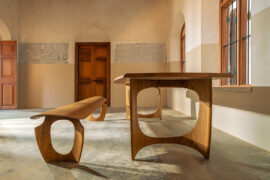
Architect, designer and craftsman Adam Markowitz bridges the worlds of architecture and fine furniture, blending precision, generosity and advocacy to strengthen Australia’s craft and design community.